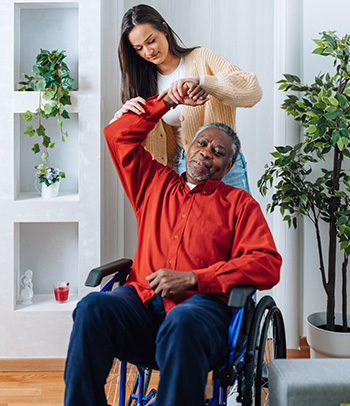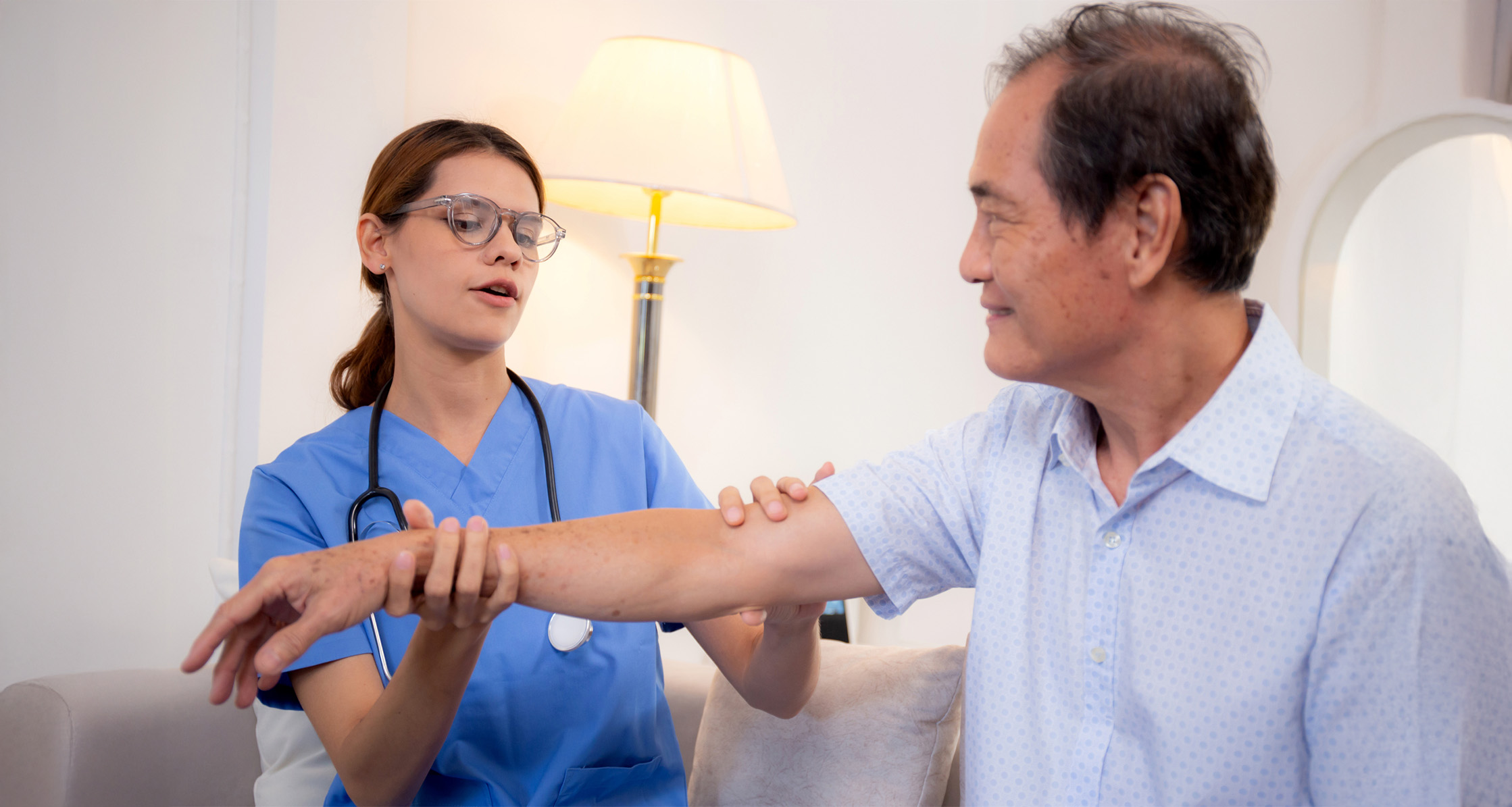One million people in the U.S. live with Parkinson’s disease, including more than 110,000 Veterans who receive care through the Department of Veterans Affairs (VA).
One million people in the U.S. live with Parkinson’s disease, including more than 110,000 Veterans who receive care through the Department of Veterans Affairs (VA). While the exact cause of Parkinson’s disease is unknown, developing it can be associated with exposure to Agent Orange and other herbicides during military service.
Living with Parkinson’s disease can be challenging, but an early diagnosis and the right treatment can help people live well with Parkinson’s for several years.
Learn more about Parkinson’s disease, its early signs, treatment options, as well as the resources available to support Veterans diagnosed with the disease.
What is Parkinson’s Disease?
Parkinson’s disease is a chronic and progressive neurological disease, commonly referred to as a movement disorder, which causes unintended or uncontrollable movements, such as shaking, stiffness, and difficulty with balance and coordination.
The disease is caused when nerve cells in an area of the brain that controls movement become impaired or die. Normally, these cells produce dopamine, the chemical messenger that transmits signals to the brain to produce smooth, purposeful movement. But when they die or become impaired, they make less dopamine, causing the movement problems associated with the disease.
People with Parkinson’s disease also lose the nerve endings that produce norepinephrine, the main chemical messenger to the part of the nervous system that controls many automatic functions of the body. This might help explain some of the nonmovement-related features of Parkinson’s, like fatigue, irregular blood pressure, and more.
What Are the Common Signs of Parkinson’s Disease?
Symptoms associated with Parkinson’s disease and the rate at which it progresses differ greatly among individuals. Early indicators are subtle and occur gradually. An example may be a slight change to your gait or a lack of facial expression, often noticed by friends and family first.
Symptoms often begin on one side of the body or even in just one limb. They gradually worsen over time and affect both sides of the body.
Common symptoms of Parkinson’s disease include:
- Shaking in your hands, arms, legs, jaw, or head during rest
- Stiff limbs or muscle rigidity
- Slowness of movement, including activities you used to perform quickly and easily, such as washing or dressing
- Less expressive face
- Gait changes, such as arms that don’t swing like they used to, feet that seem stuck to the floor, or a tendency to lean forward
- Balance problems that progress over time, sometimes leading to falls
- Sleep disturbances, such as sudden movements
- Urinary dysfunction
- Constipation
- Sudden drop in blood pressure when a person stands up from a seated position
- Swallowing problems
As Parkinson’s disease progresses, some people may find it difficult to walk or talk. Patients may experience mental or behavioral changes as well. Some may show signs of cognitive decline, including issues with memory, focus, and attention.
It’s important to remember that many of these symptoms can be normal parts of aging or a sign of something else. For example, certain medications can cause tremors as a side effect, and post-traumatic stress disorder can lead to sleep disturbances and movement during sleep. No single symptom means you have Parkinson’s disease, but if you have something you’re concerned about, make an appointment with your health care provider to discuss your fears.
Who Is At Risk for Developing Parkinson’s Disease?
Anyone can develop Parkinson’s disease, but there are some common factors.
- It affects more men than women.
- Most people develop the disease after age 60, and incidence rises with older age.
- Some cases of Parkinson’s disease appear hereditary, but in most cases, it doesn’t run in families.
- Exposure to certain toxins and pesticides, like Agent Orange, may lead to the disease.
Veterans with Parkinson’s disease who were exposed to Agent Orange or other herbicides during military service do not have to prove a connection between their disease and service to be eligible for disability compensation and health care. Learn more about VA benefits for Parkinson’s disease.
What Kinds of Treatments Are Available for Parkinson’s Disease?
While there is no cure for Parkinson’s disease, there are many treatment options available.
Usually, Parkinson’s disease is diagnosed by your health care provider after going over your medical history and performing a neurological exam. Often, blood and lab tests are used to rule out other disorders.
Once you have a diagnosis for the disease, you and your provider can work together to find a treatment path that helps to improve your symptoms and quality of life. Medicines, surgical treatment, and other therapies can often relieve symptoms.
- Medicines can increase the level of dopamine in the brain to help reduce involuntary movements, tremors, and muscle stiffness.
- Other medicines can help control non-motor symptoms, like mood disorders or sleep issues.
- Deep brain stimulation uses electrodes to stimulate specific areas in the brain that control movement, which may help stop symptoms such as tremors, slowness, and rigidity.
- Physical, occupational, speech, and massage therapies are often used to help improve symptoms.
In addition, you can reduce the effects of certain symptoms through:
- A healthy diet filled with the right nutrients for overall wellness.
- Exercises to help improve your balance, gait, coordination, and flexibility, such as yoga or tai chi.
Resources
- There are six VA Parkinson’s Disease Research, Education, and Clinical Centers (PADRECCs) around the country. Each PADRECC serves a specific geographic location and offers state-of-the-art clinical care, education, research, and advocacy for Veterans diagnosed with Parkinson’s disease. These centers are staffed with movement disorder specialists, neurosurgeons, psychiatrists, psychologists, nurses, social workers, and other experts.
- Support groups or VA’s mental health resources can help patients and caregivers cope with a Parkinson’s disease diagnosis. While the disease progresses slowly, over time, your day-to-day life will be affected, and the emotional effects can be significant. A support group or counseling services may provide helpful coping skills, advice, and meaningful connection to others. VA also shares several stories on YouTube from Veterans living with Parkinson’s disease.
- The Parkinson’s Foundation and VA have partnered together since 2020 to improve the health, well-being, and quality of life for Veterans living with Parkinson’s. Explore the site to find helpful information, resources, guides, and more.
The more Veterans know about Parkinson’s disease, its early signs, and its potential connection to military service, the better prepared they will be.







